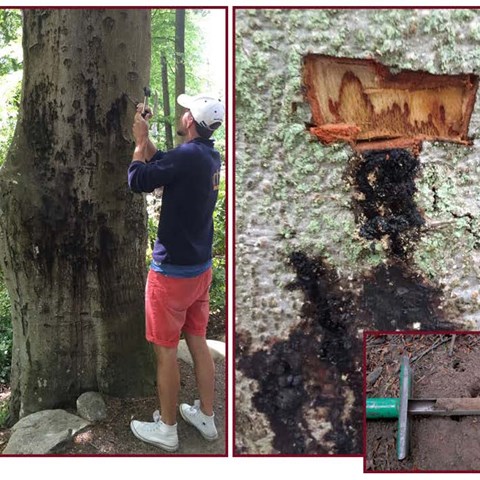Fakta:
Läs hela slutrapporten (på engelska)
Författare: Michelle Cleary, Institutionen för sydsvensk skogsvetenskap, SLU
Projektet är finansierat av Partnerskap Alnarp.

Final report: Phytophthora species are major pathogens of trees that can cause severe economic losses to forests and reduce the stability of forest ecosystems. The overall aim of this project was to provide new scientific information, with high practical relevance, on the genetics, spatial distribution and diversity of newly established Phytophthora pathogens located in Skåne.
In recent years we have witnessed a dramatic increase in the number of inquiries from forest managers, stakeholder representatives, and concerned citizens, requesting advice on how to manage Phytophthora-damages in amenity trees and forests. At present, there is an urgent need to develop baseline knowledge of the distribution and diversity of Phytophthora species on trees to determine the nature of its establishment in natural and managed areas. Detection and accurate identification of forest pathogens is one of the most important strategies for controlling forest diseases and to support decisions regarding preventative or curative treatments to minimize losses. The use of reliable detection assays combined with sensitive molecular techniques, allows for rapid and specific detection of Phytophthora from environmental samples.
The project group has established a strong network of partners comprised of both researchers (national and international) and representatives from various stakeholder interests across southern Sweden. This cooperation will be maintained as the work to map the distribution and diversity of Phytophthora species continues.
To complement the field studies greenhouse experiments was established, whereby various tree species common to southern Sweden were assessed for their susceptibility to different Phytophthora pathogens identified in surveys (Cleary et al. 2017).
A Citizen Science website for the project was launched on www.phytophthora.se. Here interested citizens can participate in the research by reporting the location of diseased trees and/or becoming a ‘Specialized Volunteer’ that will assist in the collection of field samples to be sent to the lab for DNA analyses.
Future work in this area should include more surveys and DNA analyses to confirm species identification in new locations (brought to our attention by the public) in order to provide a better understanding of the landscape epidemiology and overall risk that new invasive Phytophthora species pose to Swedish forests, cities and landscapes.
Läs hela slutrapporten (på engelska)
Författare: Michelle Cleary, Institutionen för sydsvensk skogsvetenskap, SLU
Projektet är finansierat av Partnerskap Alnarp.
Michelle Cleary, forskare
Institutionen för sydsvensk skogsvetenskap
michelle.cleary@slu.se, 040-415 51 81